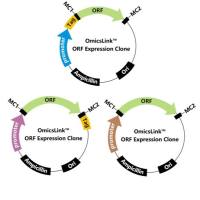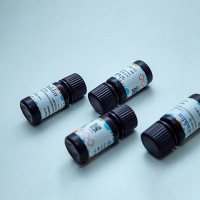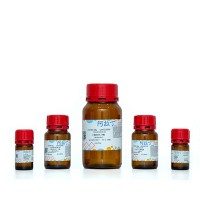[资源] 申请上传 Current Protocols In Protein Science (60M) 见公共邮箱
丁香园论坛
2783
如题。
本书全面介绍目前蛋白质技术理论及应用,全书共 3843 页,够厚的吧。目录如下。
Chapter 1 Strategies of Protein Purification and Characterization
Unit 1.1 Overview of Protein Purification and Characterization
Unit 1.2 Strategies for Protein Purification
Unit 1.3 Protein Purification Flow Charts
Unit 1.4 Purification of Glutamate Dehydrogenase from Liver and Brain
Unit 1.5 Overview of the Physical State of Proteins within Cells
Chapter 2 Computational Analysis
Introduction
Unit 2.1 Computational Methods for Protein Sequence Analysis
Unit 2.2 Hydrophobicity Profiles for Protein Sequence Analysis
Unit 2.3 Protein Secondary Structure Prediction
Unit 2.4 Internet Basics
Unit 2.5 Sequence Similarity Searching Using the BLAST Family of Programs
Unit 2.6 Protein Databases on the Internet
Unit 2.7 Protein Tertiary Structure Prediction
Unit 2.8 Protein Tertiary Structure Modeling
Unit 2.9 Comparative Protein Structure Prediction
Chapter 3 Detection and Assay Methods
Introduction
Unit 3.1 Spectrophotometric Determination of Protein Concentration
Unit 3.2 Quantitative Amino Acid Analysis
Unit 3.3 In Vitro Radiolabeling of Peptides and Proteins
Unit 3.4 Assays for Total Protein
Unit 3.5 Kinetic Assay Methods
Unit 3.6 Biotinylation of Proteins in Solution and on Cell Surfaces
Unit 3.7 Metabolic Labeling with Amino Acids
Unit 3.8 Analysis of Selenocysteine-Containing Proteins
Unit 3.9 Solid-Phase Profiling of Proteins
Chapter 4 Extraction, Stabilization, and Concentration
Introduction
Unit 4.1 Overview of Cell Fractionation
Unit 4.2 Purification of Organelles from Mammalian Cells
Unit 4.3 Subcellular Fractionation of Tissue Culture Cells
Unit 4.4 Desalting, Concentration, and Buffer Exchange by Dialysis and Ultrafiltration
Unit 4.5 Selective Precipitation of Proteins
Unit 4.6 Long-Term Storage of Proteins
Chapter 5 Production of Recombinant Proteins
Introduction
Unit 5.1 Production of Recombinant Proteins in Escherichia coli
Unit 5.2 Selection of Escherichia coli Expression Systems
Unit 5.3 Fermentation and Growth of Escherichia coli for Optimal Protein Production
Unit 5.4 Overview of the Baculovirus Expression System
Unit 5.5 Protein Expression in the Baculovirus System
Unit 5.6 Overview of Protein Expression in Saccharomyces cerevisiae
Unit 5.7 Overview of Protein Expression in Pichia pastoris
Unit 5.8 Culture of Yeast for the Production of Heterologous Proteins
Unit 5.9 Overview of Protein Expression by Mammalian Cells
Unit 5.10 Production of Recombinant Proteins in Mammalian Cells
Unit 5.11 Overview of the Vaccinia Virus Expression System
Unit 5.12 Preparation of Cell Cultures and Vaccinia Virus Stocks
Unit 5.13 Generation of Recombinant Vaccinia Viruses
Unit 5.14 Characterization of Recombinant Vaccinia Viruses and Their Products
Unit 5.15 Gene Expression Using the Vaccinia Virus/ T7 RNA Polymerase Hybrid System
Unit 5.16 Choice of Cellular Protein Expression System
Unit 5.17 Use of the Gateway System for Protein Expression in Multiple Hosts
Chapter 6 Purification of Recombinant Proteins
Introduction
Unit 6.1 Overview of the Purification of Recombinant Proteins Produced in Escherichia coli
Unit 6.2 Preparation of Soluble Proteins from Escherichia coli
Unit 6.3 Preparation and Extraction of Insoluble (Inclusion-Body) Proteins from Escherichia coli
Unit 6.4 Overview of Protein Folding
Unit 6.5 Folding and Purification of Insoluble (Inclusion Body) Proteins from Escherichia coli
Unit 6.6 Expression and Purification of GST Fusion Proteins
Unit 6.7 Expression and Purification of Thioredoxin Fusion Proteins
Chapter 7 Characterization of Recombinant Proteins
Introduction
Unit 7.1 Overview of the Characterization of Recombinant Proteins
Unit 7.2 Determining the Identity and Purity of Recombinant Proteins by UV Absorption
Spectroscopy
Unit 7.3 Determining the Identity and Structure of Recombinant Proteins
Unit 7.4 Transverse Urea-Gradient Gel Electrophoresis
Unit 7.5 Analytical Ultracentrifugation
Unit 7.6 Determining the CD Spectrum of a Protein
Unit 7.7 Determining the Fluorescence Spectrum of a Protein
Unit 7.8 Light Scattering
Unit 7.9 Measuring Protein Thermostability by Differential Scanning Calorimetry
Unit 7.10 Characterizing Recombinant Proteins Using HPLC Gel Filtration and Mass Spectrometry
Unit 7.11 Rapid Screening of E. coli Extracts by Heteronuclear NMR
Chapter 8 Conventional Chromatographic Separations
Introduction
Unit 8.1 Overview of Conventional Chromatography
Unit 8.2 Ion-Exchange Chromatography
Unit 8.3 Gel-Filtration Chromatography
Unit 8.4 Hydrophobic-Interaction Chromatography
Unit 8.5 Chromatofocusing
Unit 8.6 Hydroxylapatite Chromatography
Unit 8.7 HPLC of Peptides and Proteins
Chapter 9 Affinity Purification
Introduction
Unit 9.1 Lectin Affinity Chromatography
Unit 9.2 Dye Affinity Chromatography
Unit 9.3 Affinity Purification of Natural Ligands
Unit 9.4 Metal-Chelate Affinity Chromatography
Unit 9.5 Immunoaffinity Chromatography
Unit 9.6 Purification of Sequence-Specific DNA-Binding Proteins by Affinity Chromatography
Unit 9.7 Purification of DNA-Binding Proteins Using Biotin/Streptavidin Affinity Systems
Unit 9.8 Immunoprecipitation
Unit 9.9 Overview of Affinity Tags for Protein Purification
Chapter 10 Electrophoresis
Introduction
Unit 10.1 One-Dimensional SDS Gel Electrophoresis of Proteins
Unit 10.2 One-Dimensional Isoelectric Focusing of Proteins in Slab Gels
Unit 10.3 One-Dimensional Electrophoresis Using Nondenaturing Conditions
Unit 10.4 Two-Dimensional Gel Electrophoresis
Unit 10.5 Protein Detection in Gels Using Fixation
Unit 10.6 Protein Detection in Gels Without Fixation
Unit 10.7 Electroblotting from Polyacrylamide Gels
Unit 10.8 Detection of Proteins on Blot Membranes
Unit 10.9 Capillary Electrophoresis of Proteins and Peptides
Unit 10.10 Immunoblot Detection
Unit 10.11 Autoradiography
Unit 10.12 Digital Electrophoresis Analysis
Unit 10.13 Capillary Electrophoresis of Peptides and Proteins Using Isoelectric Buffers
Chapter 11 Chemical Analysis
Introduction
Unit 11.1 Enzymatic Digestion of Proteins in Solution
Unit 11.2 Enzymatic Digestion of Proteins on PVDF Membranes
Unit 11.3 Digestion of Proteins in Gels for Sequence Analysis
Unit 11.4 Chemical Cleavage of Proteins in Solution
Unit 11.5 Chemical Cleavage of Proteins on Membranes
Unit 11.6 Reversed-Phase Isolation of Peptides
Unit 11.7 Removal of N-Terminal Blocking Groups from Proteins
Unit 11.8 C-Terminal Sequence Analysis
Unit 11.9 Amino Acid Analysis
Unit 11.10 N-Terminal Sequence Analysis of Proteins and Peptides
Unit 11.11 Determination of Disulfide-Bond Linkages in Proteins
Chapter 12 Post-Translational Modification: Glycosylation
Introduction
Unit 12.1 Overview of Glycoconjugate Analysis
Unit 12.2 Metabolic Radiolabeling of Animal Cell Glycoconjugates
Unit 12.3 Inhibition of N-Linked Glycosylation
Unit 12.4 Endoglycosidase and Glycoamidase Release of N-Linked Oligosaccharides
Unit 12.5 Detection of Glycophospholipid Anchors on Proteins
Unit 12.6 Determining the Structure of Oligosaccharides N- and O-Linked to Glycoproteins
Unit 12.7 Determining the Structure of Glycan Moieties by Mass Spectrometry
Unit 12.8 Detection and Analysis of Proteins Modified by O-Linked N-Acetylglucosamine
Chapter 13 Post-Translational Modification: Phosphorylation and
Phosphatases
Introduction
Unit 13.1 Overview of Protein Phosphorylation
Unit 13.2 Labeling Cultured Cells with 32Pi and Preparing Cell Lysates for Immunoprecipitation
Unit 13.3 Phosphoamino Acid Analysis
Unit 13.4 Detection of Phosphorylation by Immunological Techniques
Unit 13.5 Detection of Phosphorylation by Enzymatic Techniques
Unit 13.6 Preparation and Application of Polyclonal and Monoclonal Sequence-Specific Anti-
Phosphoamino Acid Antibodies
Unit 13.7 Assays of Protein Kinases Using Exogenous Substrates
Unit 13.8 Permeabilization Strategies to Study Protein Phosphorylation
Unit 13.9 Phosphopeptide Mapping and Identification of Phosphorylation Sites
Unit 13.10 Use of Protein Phosphatase Inhibitors
Chapter 14 Post-Translational Modification: Specialized Applications
Introduction
Unit 14.1 Analysis of Disulfide Bond Formation
Unit 14.2 Analysis of Protein Acylation
Unit 14.3 Analysis of Protein Prenylation and Carboxyl-Methylation
Unit 14.4 Analysis of Oxidative Modification of Proteins
Unit 14.5 Analysis of Protein Ubiquitination
Unit 14.6 Analysis of Protein S-Nitrosylation
Chapter 15 Chemical Modification of Proteins
Introduction
Unit 15.1 Modification of Cysteine
Unit 15.2 Modification of Amino Groups
Chapter 16 Mass Spectrometry
Introduction
Unit 16.1 Overview of Peptide and Protein Analysis by Mass Spectrometry
Unit 16.2 Matrix-Assisted Laser Desorption/Ionization Time-of-Flight Mass Analysis of Peptides
Unit 16.3 Sample Preparation for MALDI Mass Analysis of Peptides and Proteins
Unit 16.4 In-Gel Digestion of Proteins for MALDI-MS Fingerprint Mapping
Unit 16.5 Searching Sequence Databases Over the Internet: Protein Identification Using MS-Fit
Unit 16.6 Searching Sequence Databases Over the Internet: Protein Identification Using MS-Tag
Unit 16.7 Enzymatic Approaches for Obtaining Amino Acid Sequence: On-Target Ladder
Sequencing
Unit 16.8 Introducing Samples Directly into Electrospray Ionization Mass Spectrometers Using a
Nanospray Interface
Unit 16.9 Introducing Samples Directly into Electrospray Ionization Mass Spectrometers Using
Microscale Capillary Liquid Chromatography
Unit 16.10 Protein Identification Using a Quadrupole Ion Trap Mass Spectrometer and SEQUEST
Database Matching
Unit 16.11 De Novo Peptide Sequencing via Manual Interpretation of MS/MS Spectra
Chapter 17 Structural Biology
Introduction
Unit 17.1 Overview of Protein Structural and Functional Folds
Unit 17.2 Overview of Macromolecular Electron Microscopy: An Essential Tool in Protein
Structural Analysis
Unit 17.3 Principles of Macromolecular X-Ray Crystallography
Unit 17.4 Crystallization of Macromolecules
Unit 17.5 Introduction to NMR of Proteins
Unit 17.6 Probing Protein Structure and Dynamics by Hydrogen Exchange—Mass Spectrometry
Unit 17.7 Introduction to Atomic Force Microscopy (AFM) in Biology
Unit 17.8 Raman Spectroscopy of Proteins
Chapter 18 Preparation and Handling of Peptides
Introduction
Unit 18.1 Introduction to Peptide Synthesis
Unit 18.2 Synthesis of Multiple Peptides on Plastic Pins
Unit 18.3 Synthetic Peptides for Production of Antibodies that Recognize Intact Proteins
Unit 18.4 Native Chemical Ligation of Polypeptides
Unit 18.5 Synthesis and Application of Peptide Dendrimers As Protein Mimetics
Unit 18.6 Disulfide Bond Formation in Peptides
Chapter 19 Identification of Protein Interactions
Introduction
Unit 19.1 Analysis of Protein-Protein Interactions
Unit 19.2 Interaction Trap/Two-Hybrid System to Identify Interacting Proteins
Unit 19.3 Phage-Based Expression Cloning to Identify Interacting Proteins
Unit 19.4 Detection of Protein-Protein Interactions by Coprecipitation
Unit 19.5 Imaging Protein-Protein Interactions by Fluorescence Resonance Energy Transfer (FRET)
Microscopy
Unit 19.6 High-Throughput Screening for Protein-Protein Interactions Using Yeast Two-Hybrid
Arrays
Unit 19.7 Identification of Protein Interactions by Far Western Analysis
Unit 19.8 Scintillation Proximity Assay (SPA) Technology to Study Biomolecular Interactions
Chapter 20 Quantitation of Protein Interactions
Introduction
Unit 20.1 Overview of the Quantitation of Protein Interactions
Unit 20.2 Measuring Protein Interactions by Optical Biosensors
Unit 20.3 Analytical Centrifugation: Equilibrium Approach
Unit 20.4 Titration Microcalorimetry
Unit 20.5 Reduced-Scale Large-Zone Analytical Gel-Filtration Chromatography for Measurement
of Protein Association Equilibria
Unit 20.6 Size-Exclusion Chromatography with On-Line Light Scattering
Unit 20.7 Analytical Ultracentrifugation: Sedimentation Velocity Analysis
Chapter 21 Peptidases
Introduction
Unit 21.1 Proteases
Unit 21.2 Papain-like Cysteine Proteases
Unit 21.3 Overview of Pepsin-like Aspartic Peptidases
Unit 21.4 Metalloproteases
Unit 21.5 Purification and Characterization of Proteasomes from Saccharomyces cerevisiae
Unit 21.6 Purification of the Eukaryotic 20S Proteasome
Unit 21.7 Serpins (Serine Protease Inhibitors)
Unit 21.8 Caspases
Unit 21.9 Use of GFP as a Reporter for the Analysis of Sequence-Specific Proteases
Unit 21.10 An Overview of Serine Proteases
Unit 21.11 Over-Expression and Purification of Active Serine Proteases and Their Variants from
Escherichia coli Inclusion Bodies
Unit 21.12 Assaying Proteases in Cellular Environments
Unit 21.13 Expression, Purification, and Characterization of Caspases
Unit 21.14 Expression, Purification, and Characterization of Aspartic Endopeptidases: Plasmodium
Plasmepsins and "Short" Recombinant Human Pseudocathepsin
Unit 21.15 Zymography of Metalloproteinases
Unit 21.16 Monitoring Metalloproteinase Activity Using Synthetic Fluorogenic Substrates
Unit 21.17 Applications for Chemical Probes of Proteolytic Activity
Chapter 22 Gel-Based Proteome Analysis
Introduction
Unit 22.1 Overview of Proteome Analysis
Unit 22.2 Protein Profiling Using Two-Dimensional Difference Gel Electrophoresis (2-D DIGE)
Unit 22.3 Laser Capture Microdissection for Proteome Analysis
Unit 22.4 Preparing Protein Extracts for Quantitative Two-Dimensional Gel Comparison
Unit 22.5 Isolation of Organelles and Prefractionation of Protein Extracts Using Free-Flow
Electrophoresis
Chapter 23 Non-Gel-Based Proteome Analysis
Introduction
Unit 23.1 Analysis of Protein Composition Using Multidimensional Chromatography and Mass
Spectrometry
Unit 23.2 Quantitative Protein Profile Comparisons Using the Isotope-Coded Affinity Tag Method
Unit 23.3 Proteomic Analysis Using 2-D Liquid Separations of Intact Proteins From Whole-Cell
Lysates
Unit 23.4 Quantitative Protein Analysis Using Proteolytic [18O]Water Labeling
Appendix 1 Useful Data
1A Characteristics of Amino Acids
1B Commonly Used Detergents
1C Conversion Factors and Half-Life Information for Radioactivity
1D Common Conversion Factors
Appendix 2 Laboratory Guidelines, Equipment, and Stock Solutions
2A Laboratory Safety
2B Safe Use of Radioisotopes
2C Centrifuges and Rotors
2D Standard Laboratory Equipment
2E Commonly Used Reagents
Appendix 3 Commonly Used Techniques
3A Use of Protein Folding Reagents
3B Dialysis
3C Techniques for Mammalian Cell Tissue Culture
3D Importing Biological Materials
3E Silanizing Glassware
3F Protein Precipitation Using Ammonium Sulfate
3G Statistics: Detecting Differences Among Groups
3H Analyzing Radioligand Binding Data
Appendix 4 Molecular Biology Techniques
4A Media Preparation and Bacteriological Tools
4B Growth in Liquid or Solid Media
4C Preparation of Plasmid DNA
4D Introduction of Plasmid DNA into Cells
4E Purification and Concentration of DNA from Aqueous Solutions
4F Agarose Gel Electrophoresis
4G Southern Blotting
4H Hybridization Analysis of DNA Blots
4I Digestion of DNA with Restriction Endonucleases
4J The Polymerase Chain Reaction
4K Quantitation of Nucleic Acids with Absorption Spectroscopy
4L Growth and Manipulation of Yeast
Appendix 5 Biophysical Methods: Data Analysis
5A Theoretical Aspects of the Quantitative Characterization of Ligand Binding
SUPPLIERS APPENDIX
Selected Suppliers of Reagents and Equipment
本书全面介绍目前蛋白质技术理论及应用,全书共 3843 页,够厚的吧。目录如下。
Chapter 1 Strategies of Protein Purification and Characterization
Unit 1.1 Overview of Protein Purification and Characterization
Unit 1.2 Strategies for Protein Purification
Unit 1.3 Protein Purification Flow Charts
Unit 1.4 Purification of Glutamate Dehydrogenase from Liver and Brain
Unit 1.5 Overview of the Physical State of Proteins within Cells
Chapter 2 Computational Analysis
Introduction
Unit 2.1 Computational Methods for Protein Sequence Analysis
Unit 2.2 Hydrophobicity Profiles for Protein Sequence Analysis
Unit 2.3 Protein Secondary Structure Prediction
Unit 2.4 Internet Basics
Unit 2.5 Sequence Similarity Searching Using the BLAST Family of Programs
Unit 2.6 Protein Databases on the Internet
Unit 2.7 Protein Tertiary Structure Prediction
Unit 2.8 Protein Tertiary Structure Modeling
Unit 2.9 Comparative Protein Structure Prediction
Chapter 3 Detection and Assay Methods
Introduction
Unit 3.1 Spectrophotometric Determination of Protein Concentration
Unit 3.2 Quantitative Amino Acid Analysis
Unit 3.3 In Vitro Radiolabeling of Peptides and Proteins
Unit 3.4 Assays for Total Protein
Unit 3.5 Kinetic Assay Methods
Unit 3.6 Biotinylation of Proteins in Solution and on Cell Surfaces
Unit 3.7 Metabolic Labeling with Amino Acids
Unit 3.8 Analysis of Selenocysteine-Containing Proteins
Unit 3.9 Solid-Phase Profiling of Proteins
Chapter 4 Extraction, Stabilization, and Concentration
Introduction
Unit 4.1 Overview of Cell Fractionation
Unit 4.2 Purification of Organelles from Mammalian Cells
Unit 4.3 Subcellular Fractionation of Tissue Culture Cells
Unit 4.4 Desalting, Concentration, and Buffer Exchange by Dialysis and Ultrafiltration
Unit 4.5 Selective Precipitation of Proteins
Unit 4.6 Long-Term Storage of Proteins
Chapter 5 Production of Recombinant Proteins
Introduction
Unit 5.1 Production of Recombinant Proteins in Escherichia coli
Unit 5.2 Selection of Escherichia coli Expression Systems
Unit 5.3 Fermentation and Growth of Escherichia coli for Optimal Protein Production
Unit 5.4 Overview of the Baculovirus Expression System
Unit 5.5 Protein Expression in the Baculovirus System
Unit 5.6 Overview of Protein Expression in Saccharomyces cerevisiae
Unit 5.7 Overview of Protein Expression in Pichia pastoris
Unit 5.8 Culture of Yeast for the Production of Heterologous Proteins
Unit 5.9 Overview of Protein Expression by Mammalian Cells
Unit 5.10 Production of Recombinant Proteins in Mammalian Cells
Unit 5.11 Overview of the Vaccinia Virus Expression System
Unit 5.12 Preparation of Cell Cultures and Vaccinia Virus Stocks
Unit 5.13 Generation of Recombinant Vaccinia Viruses
Unit 5.14 Characterization of Recombinant Vaccinia Viruses and Their Products
Unit 5.15 Gene Expression Using the Vaccinia Virus/ T7 RNA Polymerase Hybrid System
Unit 5.16 Choice of Cellular Protein Expression System
Unit 5.17 Use of the Gateway System for Protein Expression in Multiple Hosts
Chapter 6 Purification of Recombinant Proteins
Introduction
Unit 6.1 Overview of the Purification of Recombinant Proteins Produced in Escherichia coli
Unit 6.2 Preparation of Soluble Proteins from Escherichia coli
Unit 6.3 Preparation and Extraction of Insoluble (Inclusion-Body) Proteins from Escherichia coli
Unit 6.4 Overview of Protein Folding
Unit 6.5 Folding and Purification of Insoluble (Inclusion Body) Proteins from Escherichia coli
Unit 6.6 Expression and Purification of GST Fusion Proteins
Unit 6.7 Expression and Purification of Thioredoxin Fusion Proteins
Chapter 7 Characterization of Recombinant Proteins
Introduction
Unit 7.1 Overview of the Characterization of Recombinant Proteins
Unit 7.2 Determining the Identity and Purity of Recombinant Proteins by UV Absorption
Spectroscopy
Unit 7.3 Determining the Identity and Structure of Recombinant Proteins
Unit 7.4 Transverse Urea-Gradient Gel Electrophoresis
Unit 7.5 Analytical Ultracentrifugation
Unit 7.6 Determining the CD Spectrum of a Protein
Unit 7.7 Determining the Fluorescence Spectrum of a Protein
Unit 7.8 Light Scattering
Unit 7.9 Measuring Protein Thermostability by Differential Scanning Calorimetry
Unit 7.10 Characterizing Recombinant Proteins Using HPLC Gel Filtration and Mass Spectrometry
Unit 7.11 Rapid Screening of E. coli Extracts by Heteronuclear NMR
Chapter 8 Conventional Chromatographic Separations
Introduction
Unit 8.1 Overview of Conventional Chromatography
Unit 8.2 Ion-Exchange Chromatography
Unit 8.3 Gel-Filtration Chromatography
Unit 8.4 Hydrophobic-Interaction Chromatography
Unit 8.5 Chromatofocusing
Unit 8.6 Hydroxylapatite Chromatography
Unit 8.7 HPLC of Peptides and Proteins
Chapter 9 Affinity Purification
Introduction
Unit 9.1 Lectin Affinity Chromatography
Unit 9.2 Dye Affinity Chromatography
Unit 9.3 Affinity Purification of Natural Ligands
Unit 9.4 Metal-Chelate Affinity Chromatography
Unit 9.5 Immunoaffinity Chromatography
Unit 9.6 Purification of Sequence-Specific DNA-Binding Proteins by Affinity Chromatography
Unit 9.7 Purification of DNA-Binding Proteins Using Biotin/Streptavidin Affinity Systems
Unit 9.8 Immunoprecipitation
Unit 9.9 Overview of Affinity Tags for Protein Purification
Chapter 10 Electrophoresis
Introduction
Unit 10.1 One-Dimensional SDS Gel Electrophoresis of Proteins
Unit 10.2 One-Dimensional Isoelectric Focusing of Proteins in Slab Gels
Unit 10.3 One-Dimensional Electrophoresis Using Nondenaturing Conditions
Unit 10.4 Two-Dimensional Gel Electrophoresis
Unit 10.5 Protein Detection in Gels Using Fixation
Unit 10.6 Protein Detection in Gels Without Fixation
Unit 10.7 Electroblotting from Polyacrylamide Gels
Unit 10.8 Detection of Proteins on Blot Membranes
Unit 10.9 Capillary Electrophoresis of Proteins and Peptides
Unit 10.10 Immunoblot Detection
Unit 10.11 Autoradiography
Unit 10.12 Digital Electrophoresis Analysis
Unit 10.13 Capillary Electrophoresis of Peptides and Proteins Using Isoelectric Buffers
Chapter 11 Chemical Analysis
Introduction
Unit 11.1 Enzymatic Digestion of Proteins in Solution
Unit 11.2 Enzymatic Digestion of Proteins on PVDF Membranes
Unit 11.3 Digestion of Proteins in Gels for Sequence Analysis
Unit 11.4 Chemical Cleavage of Proteins in Solution
Unit 11.5 Chemical Cleavage of Proteins on Membranes
Unit 11.6 Reversed-Phase Isolation of Peptides
Unit 11.7 Removal of N-Terminal Blocking Groups from Proteins
Unit 11.8 C-Terminal Sequence Analysis
Unit 11.9 Amino Acid Analysis
Unit 11.10 N-Terminal Sequence Analysis of Proteins and Peptides
Unit 11.11 Determination of Disulfide-Bond Linkages in Proteins
Chapter 12 Post-Translational Modification: Glycosylation
Introduction
Unit 12.1 Overview of Glycoconjugate Analysis
Unit 12.2 Metabolic Radiolabeling of Animal Cell Glycoconjugates
Unit 12.3 Inhibition of N-Linked Glycosylation
Unit 12.4 Endoglycosidase and Glycoamidase Release of N-Linked Oligosaccharides
Unit 12.5 Detection of Glycophospholipid Anchors on Proteins
Unit 12.6 Determining the Structure of Oligosaccharides N- and O-Linked to Glycoproteins
Unit 12.7 Determining the Structure of Glycan Moieties by Mass Spectrometry
Unit 12.8 Detection and Analysis of Proteins Modified by O-Linked N-Acetylglucosamine
Chapter 13 Post-Translational Modification: Phosphorylation and
Phosphatases
Introduction
Unit 13.1 Overview of Protein Phosphorylation
Unit 13.2 Labeling Cultured Cells with 32Pi and Preparing Cell Lysates for Immunoprecipitation
Unit 13.3 Phosphoamino Acid Analysis
Unit 13.4 Detection of Phosphorylation by Immunological Techniques
Unit 13.5 Detection of Phosphorylation by Enzymatic Techniques
Unit 13.6 Preparation and Application of Polyclonal and Monoclonal Sequence-Specific Anti-
Phosphoamino Acid Antibodies
Unit 13.7 Assays of Protein Kinases Using Exogenous Substrates
Unit 13.8 Permeabilization Strategies to Study Protein Phosphorylation
Unit 13.9 Phosphopeptide Mapping and Identification of Phosphorylation Sites
Unit 13.10 Use of Protein Phosphatase Inhibitors
Chapter 14 Post-Translational Modification: Specialized Applications
Introduction
Unit 14.1 Analysis of Disulfide Bond Formation
Unit 14.2 Analysis of Protein Acylation
Unit 14.3 Analysis of Protein Prenylation and Carboxyl-Methylation
Unit 14.4 Analysis of Oxidative Modification of Proteins
Unit 14.5 Analysis of Protein Ubiquitination
Unit 14.6 Analysis of Protein S-Nitrosylation
Chapter 15 Chemical Modification of Proteins
Introduction
Unit 15.1 Modification of Cysteine
Unit 15.2 Modification of Amino Groups
Chapter 16 Mass Spectrometry
Introduction
Unit 16.1 Overview of Peptide and Protein Analysis by Mass Spectrometry
Unit 16.2 Matrix-Assisted Laser Desorption/Ionization Time-of-Flight Mass Analysis of Peptides
Unit 16.3 Sample Preparation for MALDI Mass Analysis of Peptides and Proteins
Unit 16.4 In-Gel Digestion of Proteins for MALDI-MS Fingerprint Mapping
Unit 16.5 Searching Sequence Databases Over the Internet: Protein Identification Using MS-Fit
Unit 16.6 Searching Sequence Databases Over the Internet: Protein Identification Using MS-Tag
Unit 16.7 Enzymatic Approaches for Obtaining Amino Acid Sequence: On-Target Ladder
Sequencing
Unit 16.8 Introducing Samples Directly into Electrospray Ionization Mass Spectrometers Using a
Nanospray Interface
Unit 16.9 Introducing Samples Directly into Electrospray Ionization Mass Spectrometers Using
Microscale Capillary Liquid Chromatography
Unit 16.10 Protein Identification Using a Quadrupole Ion Trap Mass Spectrometer and SEQUEST
Database Matching
Unit 16.11 De Novo Peptide Sequencing via Manual Interpretation of MS/MS Spectra
Chapter 17 Structural Biology
Introduction
Unit 17.1 Overview of Protein Structural and Functional Folds
Unit 17.2 Overview of Macromolecular Electron Microscopy: An Essential Tool in Protein
Structural Analysis
Unit 17.3 Principles of Macromolecular X-Ray Crystallography
Unit 17.4 Crystallization of Macromolecules
Unit 17.5 Introduction to NMR of Proteins
Unit 17.6 Probing Protein Structure and Dynamics by Hydrogen Exchange—Mass Spectrometry
Unit 17.7 Introduction to Atomic Force Microscopy (AFM) in Biology
Unit 17.8 Raman Spectroscopy of Proteins
Chapter 18 Preparation and Handling of Peptides
Introduction
Unit 18.1 Introduction to Peptide Synthesis
Unit 18.2 Synthesis of Multiple Peptides on Plastic Pins
Unit 18.3 Synthetic Peptides for Production of Antibodies that Recognize Intact Proteins
Unit 18.4 Native Chemical Ligation of Polypeptides
Unit 18.5 Synthesis and Application of Peptide Dendrimers As Protein Mimetics
Unit 18.6 Disulfide Bond Formation in Peptides
Chapter 19 Identification of Protein Interactions
Introduction
Unit 19.1 Analysis of Protein-Protein Interactions
Unit 19.2 Interaction Trap/Two-Hybrid System to Identify Interacting Proteins
Unit 19.3 Phage-Based Expression Cloning to Identify Interacting Proteins
Unit 19.4 Detection of Protein-Protein Interactions by Coprecipitation
Unit 19.5 Imaging Protein-Protein Interactions by Fluorescence Resonance Energy Transfer (FRET)
Microscopy
Unit 19.6 High-Throughput Screening for Protein-Protein Interactions Using Yeast Two-Hybrid
Arrays
Unit 19.7 Identification of Protein Interactions by Far Western Analysis
Unit 19.8 Scintillation Proximity Assay (SPA) Technology to Study Biomolecular Interactions
Chapter 20 Quantitation of Protein Interactions
Introduction
Unit 20.1 Overview of the Quantitation of Protein Interactions
Unit 20.2 Measuring Protein Interactions by Optical Biosensors
Unit 20.3 Analytical Centrifugation: Equilibrium Approach
Unit 20.4 Titration Microcalorimetry
Unit 20.5 Reduced-Scale Large-Zone Analytical Gel-Filtration Chromatography for Measurement
of Protein Association Equilibria
Unit 20.6 Size-Exclusion Chromatography with On-Line Light Scattering
Unit 20.7 Analytical Ultracentrifugation: Sedimentation Velocity Analysis
Chapter 21 Peptidases
Introduction
Unit 21.1 Proteases
Unit 21.2 Papain-like Cysteine Proteases
Unit 21.3 Overview of Pepsin-like Aspartic Peptidases
Unit 21.4 Metalloproteases
Unit 21.5 Purification and Characterization of Proteasomes from Saccharomyces cerevisiae
Unit 21.6 Purification of the Eukaryotic 20S Proteasome
Unit 21.7 Serpins (Serine Protease Inhibitors)
Unit 21.8 Caspases
Unit 21.9 Use of GFP as a Reporter for the Analysis of Sequence-Specific Proteases
Unit 21.10 An Overview of Serine Proteases
Unit 21.11 Over-Expression and Purification of Active Serine Proteases and Their Variants from
Escherichia coli Inclusion Bodies
Unit 21.12 Assaying Proteases in Cellular Environments
Unit 21.13 Expression, Purification, and Characterization of Caspases
Unit 21.14 Expression, Purification, and Characterization of Aspartic Endopeptidases: Plasmodium
Plasmepsins and "Short" Recombinant Human Pseudocathepsin
Unit 21.15 Zymography of Metalloproteinases
Unit 21.16 Monitoring Metalloproteinase Activity Using Synthetic Fluorogenic Substrates
Unit 21.17 Applications for Chemical Probes of Proteolytic Activity
Chapter 22 Gel-Based Proteome Analysis
Introduction
Unit 22.1 Overview of Proteome Analysis
Unit 22.2 Protein Profiling Using Two-Dimensional Difference Gel Electrophoresis (2-D DIGE)
Unit 22.3 Laser Capture Microdissection for Proteome Analysis
Unit 22.4 Preparing Protein Extracts for Quantitative Two-Dimensional Gel Comparison
Unit 22.5 Isolation of Organelles and Prefractionation of Protein Extracts Using Free-Flow
Electrophoresis
Chapter 23 Non-Gel-Based Proteome Analysis
Introduction
Unit 23.1 Analysis of Protein Composition Using Multidimensional Chromatography and Mass
Spectrometry
Unit 23.2 Quantitative Protein Profile Comparisons Using the Isotope-Coded Affinity Tag Method
Unit 23.3 Proteomic Analysis Using 2-D Liquid Separations of Intact Proteins From Whole-Cell
Lysates
Unit 23.4 Quantitative Protein Analysis Using Proteolytic [18O]Water Labeling
Appendix 1 Useful Data
1A Characteristics of Amino Acids
1B Commonly Used Detergents
1C Conversion Factors and Half-Life Information for Radioactivity
1D Common Conversion Factors
Appendix 2 Laboratory Guidelines, Equipment, and Stock Solutions
2A Laboratory Safety
2B Safe Use of Radioisotopes
2C Centrifuges and Rotors
2D Standard Laboratory Equipment
2E Commonly Used Reagents
Appendix 3 Commonly Used Techniques
3A Use of Protein Folding Reagents
3B Dialysis
3C Techniques for Mammalian Cell Tissue Culture
3D Importing Biological Materials
3E Silanizing Glassware
3F Protein Precipitation Using Ammonium Sulfate
3G Statistics: Detecting Differences Among Groups
3H Analyzing Radioligand Binding Data
Appendix 4 Molecular Biology Techniques
4A Media Preparation and Bacteriological Tools
4B Growth in Liquid or Solid Media
4C Preparation of Plasmid DNA
4D Introduction of Plasmid DNA into Cells
4E Purification and Concentration of DNA from Aqueous Solutions
4F Agarose Gel Electrophoresis
4G Southern Blotting
4H Hybridization Analysis of DNA Blots
4I Digestion of DNA with Restriction Endonucleases
4J The Polymerase Chain Reaction
4K Quantitation of Nucleic Acids with Absorption Spectroscopy
4L Growth and Manipulation of Yeast
Appendix 5 Biophysical Methods: Data Analysis
5A Theoretical Aspects of the Quantitative Characterization of Ligand Binding
SUPPLIERS APPENDIX
Selected Suppliers of Reagents and Equipment







